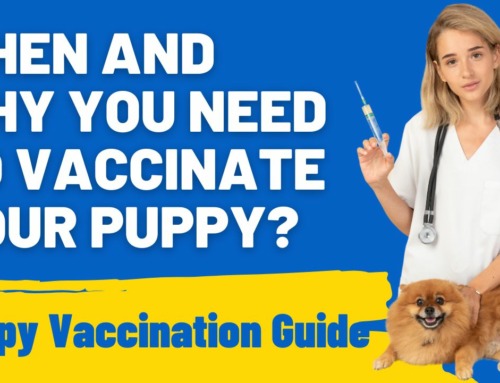We all love our dogs and only want what is best for them when it comes to their health and nutrition. Throughout history, one of the ways people across the world have shown their love for one another is through cooking and feeding our friends and family healthy, comforting, home cooked meals.
As pets continue to be integrated as part of the family setting throughout the United States, it is no surprise that pet owners want to show their love for their pets in this same way. But how can you tell if your dog is getting too much or not enough when it comes to food? Let us take a look at some ways that may indicate whether or not your furry friend is getting enough sustenance in their daily life!
How Can You Tell if a Dog Is Too Skinny?
We have probably all seen those commercials on TV – you know, the ones with Sarah McLachlan singing “Angel” – that often portray cases of severely emaciated dogs who are just skin and bones awaiting rescue. In these instances, it is generally pretty obvious that the dogs in the video are too skinny, but in daily life it can often be more difficult to determine whether or not our own pets are too skinny, based on several different factors.
When trying to determine if your canine companion is too skinny, some things to consider would be:
- Breed and body conformation
- Activity level
- Health status
- Personal bias
It is important to take all of these things into consideration when determining if your pup is too thin because these can play an important role in determining the appropriate weight for your dog. For instance, there are certain breeds such as the Greyhound or Border Collie that are born with a slender build and deep chest, whereas others like the English Bulldog have a more rotund body conformation.
Additionally, certain breeds such as working dogs tend to be more active whereas others are couch potatoes and certain health conditions may cause weight gain or exercise intolerance in pets.

In general, the best way to determine whether or not your dog is too skinny is by speaking with your veterinarian and having them assess your pup’s Body Condition Score (or BCS) which has been set forth by The World Small Animal Veterinary Association. This numerical grading scale ranges from 1-9 with 1 being emaciated and 9 being obese. The BCS number for each pet is determined by several different criteria including:
- Appearance of bony prominences
- Muscle mass
- Accumulation of fat tissue
Each time your pet visits the vet clinic, the veterinarian performs a thorough physical exam that includes a Body Condition Score. Based on this score, along with your dog’s overall health status and medical history, the veterinarian will help develop a plan for maintaining, increasing, or decreasing your dog’s weight for optimal health.
Why Is My Dog Still Skinny Even Though They Eat?
So what about dogs that are still skinny despite having a normal or above average appetite? In these cases, there are several things we can consider including activity level, health status, and the diet itself.
Activity Level
Depending on how active your dog is, they may require a higher amount of calories for their daily meals than some other dogs. For instance, working dogs are often more highly active than a typical household dog and will require a diet that is higher in calories depending on how much energy they expend each day.
Dogs that are currently experiencing a calorie deficit in comparison to the daily amount of energy expended, may need to increase the amount or nutritional value of their diet in order to satisfy all of their nutritional requirements.
Health Status
If you feel like you have tried everything and your pup still is not able to put on pounds, an underlying health condition could be to blame! Health screening can be an integral part of ensuring that your canine companion is healthy and there are several health conditions that may predispose a pet to being underweight, including intestinal parasites, hyperthyroidism, food allergies or malabsorptive illnesses, diabetes, cancer, kidney disease, and more.

It is recommended that all dogs receive annual intestinal parasite screening and bloodwork to investigate any potential underlying health conditions that may be causing your dog to either lose weight or be unable to gain weight. Patients that have an underlying health condition may gradually lose weight and their disease progresses and it is not uncommon for older dogs to develop some loss of muscle mass as they age.
Diet
Although it may seem obvious, many people often fail to consider that the diet itself may be contributing to your pet’s low body weight. With so many different options for diets on the market, it is hard to know which may be right for your furry friend. Let us take a look at some of the key factors to keep in mind when choosing the right diet for your pooch:
- Choose a diet that is appropriate for your pet’s age
- Try to avoid raw or boutique protein diets that can often contain higher amounts of bacteria and may be difficult for your pet to digest
- Stick to one protein source to limit the potential for adverse stomach upset
- Choose a diet that is fortified by veterinary professionals in accordance with standards set forth by the Association of American Feed Control Officials (AAFCO)
- Make sure you are feeding the right amount (your veterinarian can help you determine your dog’s energy requirements and advise you on how many calories per day your pet should consume to gain, lose, or maintain their weight)
- Pay attention to your dog’s eating habits and investigate potential problems with picky eaters
Most dog food companies will indicate general feeding guidelines for pets on the instructions of the food bag, but performing a more thorough calorie calculation is generally recommended for the most accurate results. If you are ever in doubt about choosing the right diet for your pet, it is always best to consult with your veterinarian for guidance.
Are you interested in reading our post, My Dog Won’t Keep a Cone On (Why and What to Do)
Is My Dog Skinny or Are They Just Fit?
One of the things we talked about previously was the need for more highly active dogs to eat more calories than dogs who live a more sedentary lifestyle. When assessing whether your dog is truly underweight or just fit, one of the easiest ways to determine this is through considering your pet’s muscle mass.
A healthy and fit pet will likely have noticeable muscle tissue present whereas dogs that are actually underweight or malnourished may have a loss of muscle mass throughout the body. Additionally, underweight dogs will likely have less energy for daily activities than those who are highly active and fit.

Is My Dog Too Skinny if I Can Feel Her Spine?
Although this may not always be the case for every dog, a protruding spine can potentially be an indication that your pet is underweight. Dogs have muscles that run parallel to the spine and a protruding spine can be an indication of potential muscle wasting or malnourishment. Additionally, the Body Condition Scale states that a dog with the “tops of their lumbar vertebrae visible” are typically considered to be underweight.
Should I Be Able to See My Dog’s Ribs?
Another indication that your pet may be too skinny is the appearance of their ribs. Although you should just be able to make out the outline of your pet’s ribs, the appearance of prominent or palpable ribs bones is likely an indication that your pet may be underweight.
Is My Dog Lean or Underweight?
As previously mentioned, some dogs may naturally have a more lean appearance and just because they may appear thin, doesn’t necessarily mean they are underweight. When considering if your pet is lean or actually underweight, it’s important to take into account their natural physical confirmation in addition to their Body Condition Score and presence of lean muscle mass to determine whether a lean appearance is abnormal for their age, breed, and current health status.
How Can I Help My Dog Gain Weight?
If you are struggling to keep weight on your pet, it is important to work with your veterinarian to determine the best course of action for helping your pup pack on the pounds. Depending on the underlying cause of your dog’s weight loss, they may require a diet transition, medical management, or simply an increase in the volume of food they consume each day.
Your veterinarian can help determine the number of calories your pet should consume in a day and help develop a plan for getting your dog to their ideal weight.

It is important to note that patients who are severely malnourished or emaciated can suffer from a condition known as refeeding syndrome which can cause severe electrolyte disturbances that require emergency medical care.
Additionally, feeding high fat foods, table scraps, or a variety of different food options may actually predispose an underweight dog to worsening symptoms as they may develop gastrointestinal distress, pancreatitis, or a food aversion that can cause them to lose even more weight.
Final Words
When considering whether or not your dog may be too skinny, this article should give you an idea of some things to consider and where to start to determine if your pet requires an adjustment to their current feeding plan.
If you believe your pet may be underweight, it is important to always contact a trusted veterinarian for advice to ensure that your pet is receiving proper medical care and nutrition to help them live a long, happy, healthy life.




